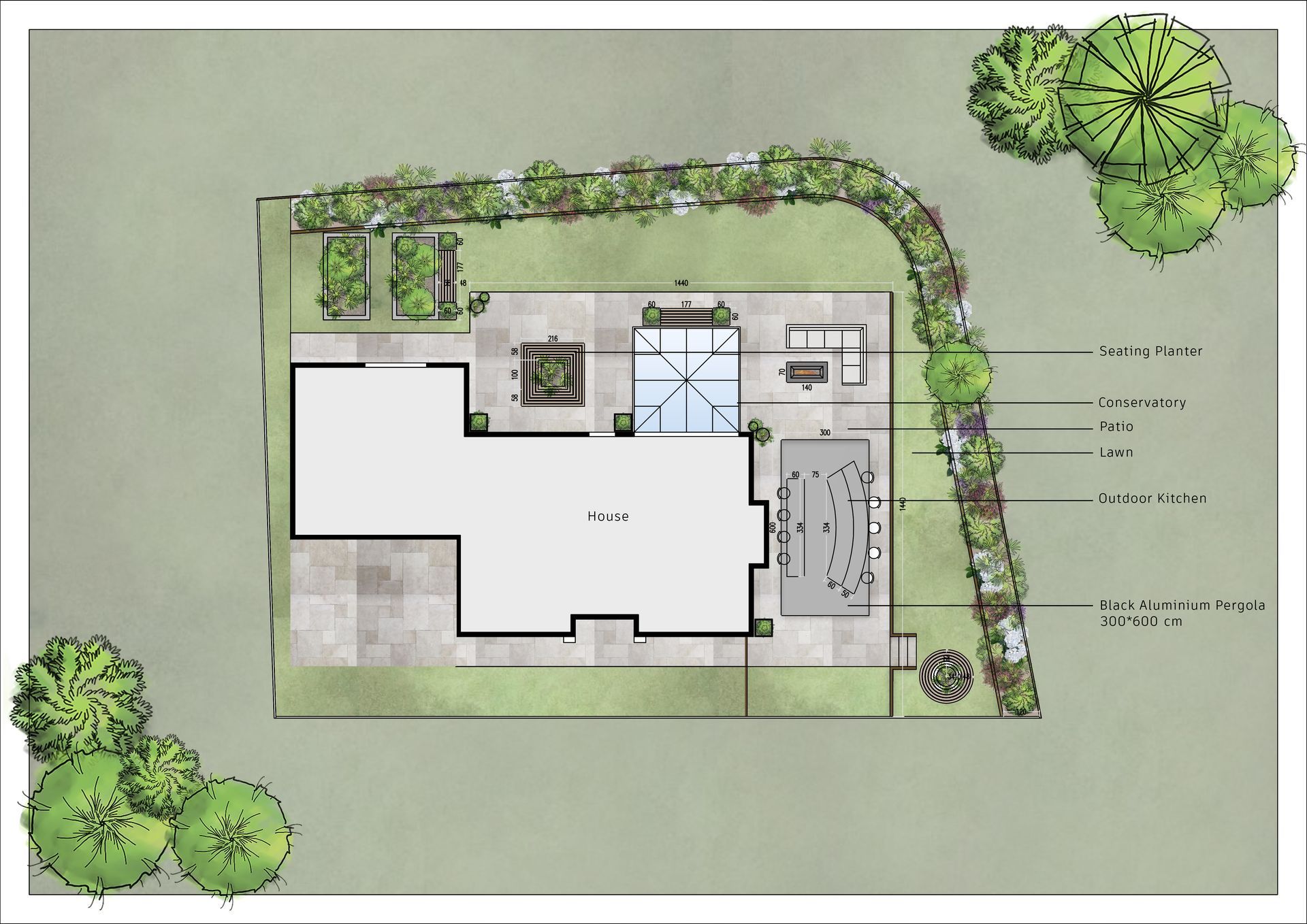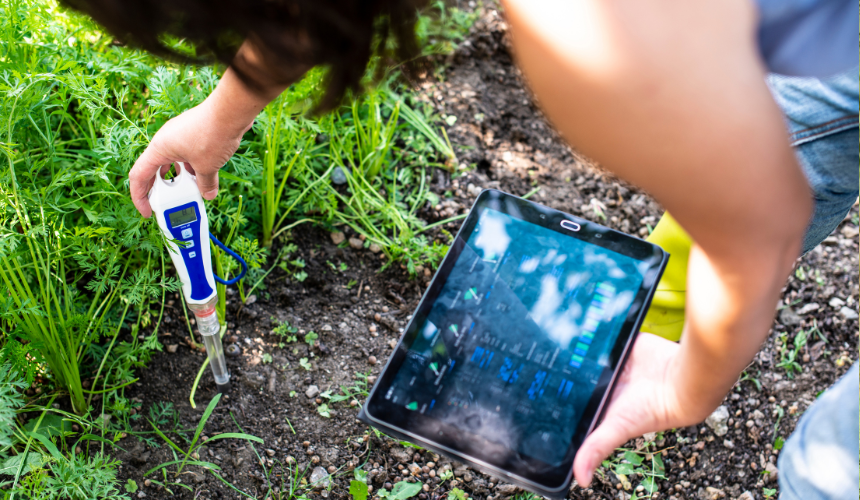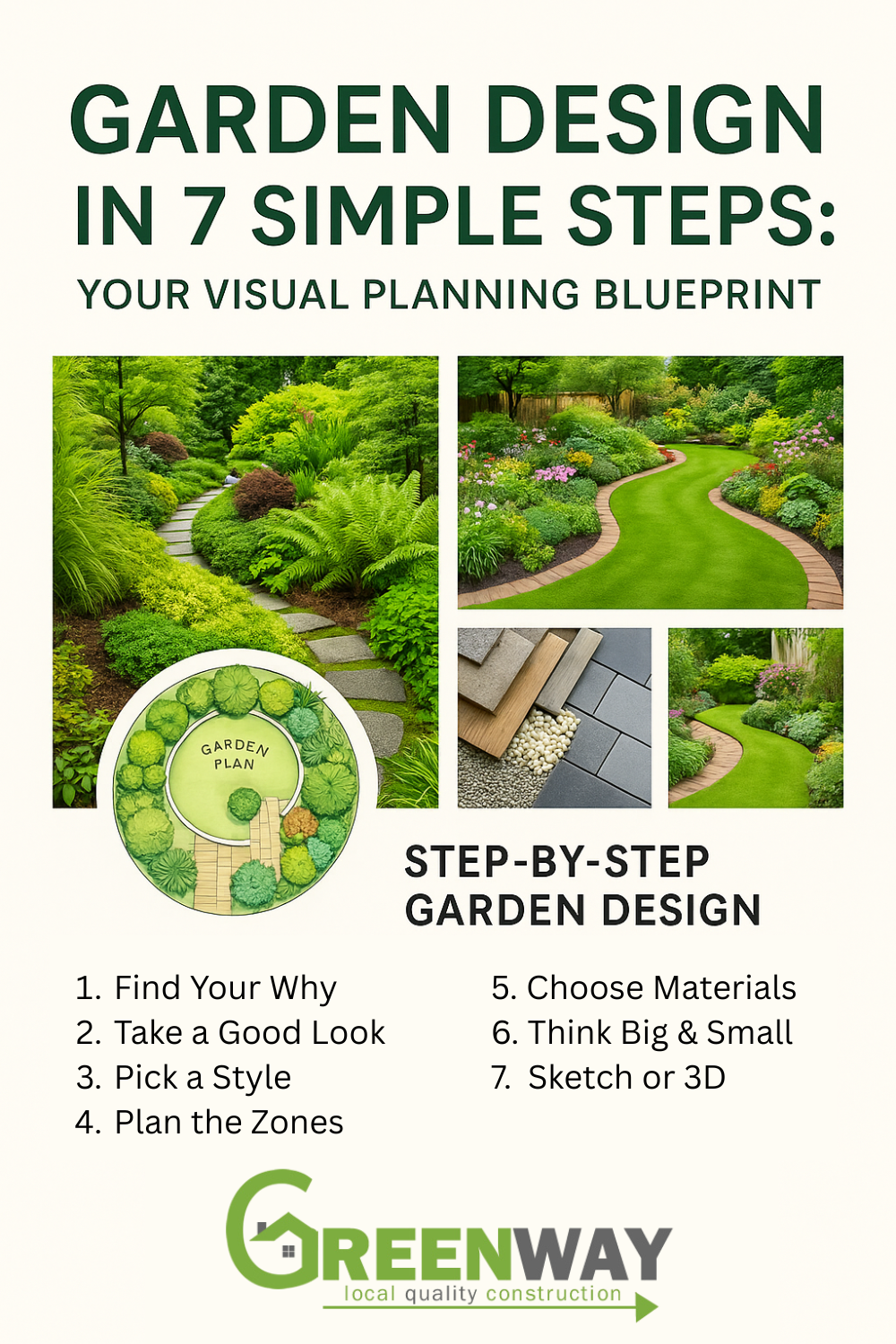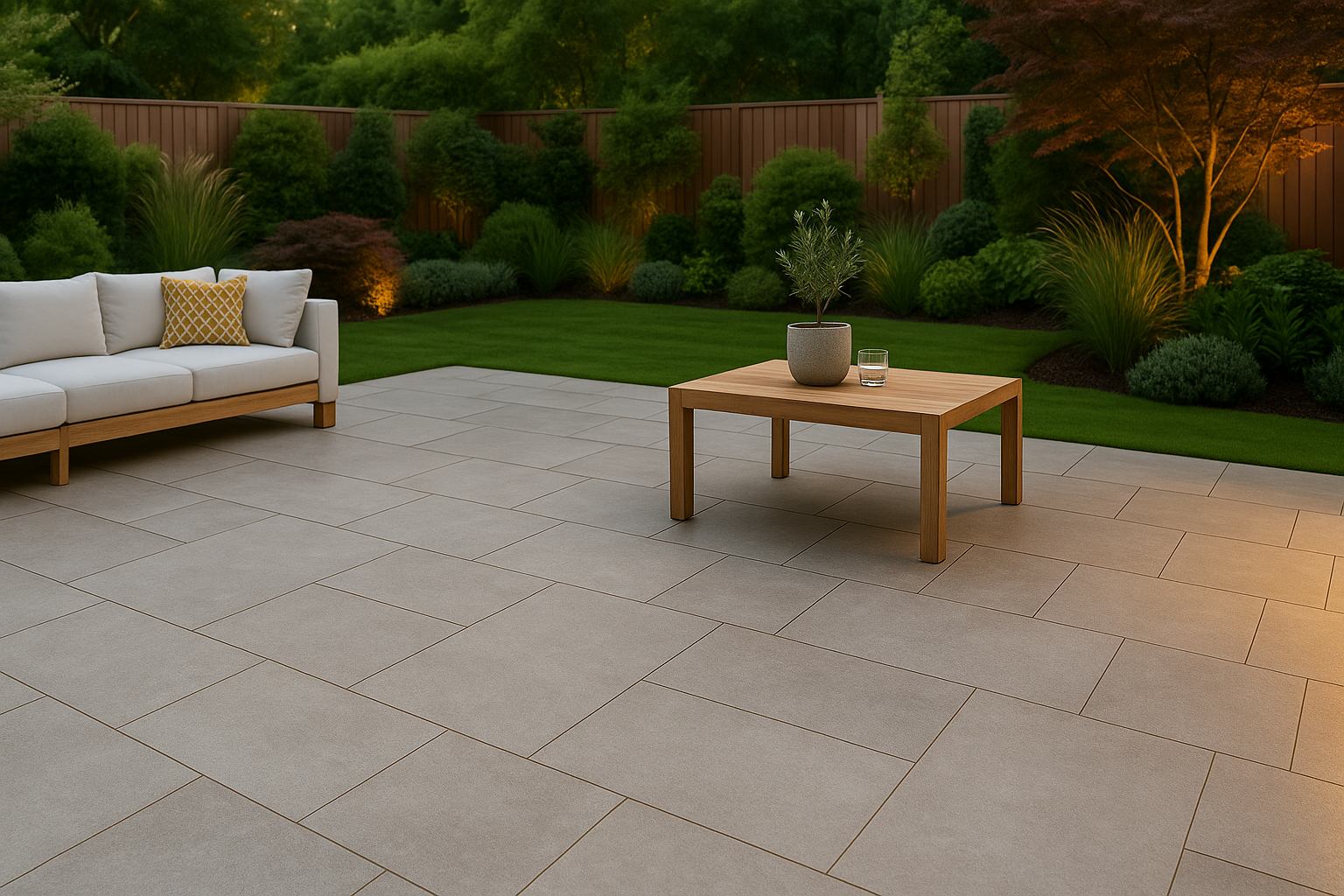How to Design a Garden:
A Step-by-Step Guide
Designing a garden is both an art and a science. A well-designed garden can be a place of beauty, tranquillity, and productivity. Whether starting from scratch or renovating an existing garden, understanding the fundamentals of garden design can help you create a space that suits your needs and aesthetics.
Planning Your Garden
Planning is the first and most crucial step in garden design. This stage involves assessing your space, understanding your environment, and setting clear goals for what you want to achieve.
Assessing Space and Environment
Begin by measuring your garden area and noting features like trees, structures, and slopes. Understanding the sun and shade patterns, soil type, and climate will help you make informed decisions about plant selection and garden layout.
Setting Goals and Priorities
Decide what you want from your garden. Do you want a vegetable garden, a flower garden, or a mix of both? Are you looking to create a relaxation, entertainment, or play space? Setting clear goals will guide your design process and help you prioritise elements.
Choosing a Garden Style
Your garden's style will influence its overall look and feel. Choosing a style early on can guide the rest of your design, whether you prefer a formal, structured garden or a relaxed, informal one.
Formal vs. Informal Gardens
Formal gardens are characterised by symmetry, straight lines, and a structured layout. They often feature neatly trimmed hedges, defined pathways, and geometric shapes. In contrast, informal gardens have a more natural, free-flowing design with curved paths, irregular planting patterns, and a mix of different plants.
Modern, Traditional, and Cottage Styles
Modern gardens often use clean lines, minimalistic design, and contemporary materials like metal and concrete. Traditional gardens might feature classic elements such as roses, topiaries, and ornate stonework. Cottage gardens are known for their charming, slightly chaotic look, colourful flowers and rustic features.
Designing the Layout
Alright, let's get down to the fun part – the layout. Think of this as the blueprint for your dream garden. It's all about where everything goes and how it all connects.
Creating a Garden Plan
Grab a piece of paper or a garden planning app and start sketching. Don't worry if it's not perfect – it's just a rough plan. Mark out existing elements like trees, sheds, or fences. Then, think about how you want to use your space. Maybe you want a cosy seating area, a flower bed, or a spot for veggies.
Zoning and Pathways
Next up, zoning. This is a fancy saying, "dividing your garden into different areas." Pathways are like the garden's highways, connecting these zones. Choose materials for your paths that match your garden's vibe – gravel for a rustic feel, stone for something more classic.
Selecting Plants
Now, let's talk plants – the stars of the show. Picking the right plants makes all the difference.
Understanding Plant Types
First, get to know the main types: annuals, perennials, shrubs, and trees. Annuals are the party-goers – they bloom for one season and then bow out. Perennials are your long-term friends – they come back year after year. Shrubs and trees add structure and height to your garden, kind of like the walls and ceilings of a room.
Seasonal Considerations
Think about what blooms when. Mix it up to have flowers or plants looking good every season. This way, your garden always has something interesting going on and helps local wildlife.
Soil Preparation
Let's get our hands dirty – literally. Good soil is the foundation of a great garden.
Testing and Amending Soil
First, test your soil. You can get a simple kit online or from a garden centre. This will tell you the pH level and nutrients in your soil. Depending on the results, you might need to add compost or other amendments to make your soil suitable for your plants.
Composting and Mulching
Speaking of compost, it's gold for your garden. Turn your kitchen scraps and garden waste into nutrient-rich compost. And don't forget mulching – it helps keep moisture in, weeds out, and your soil happy. Use organic mulches like straw, wood chips, or leaf mould.
Watering Systems
Now that we've sorted our plants and soil let's talk about watering. Keeping your garden hydrated is crucial but must be a smooth process.
Irrigation Options
There are plenty of ways to water your garden, from good old-fashioned watering cans to sophisticated irrigation systems. Drip irrigation and soaker hoses are great because they deliver water directly to the roots, which is super efficient. Plus, they save you time!
Sustainable Water Practices
Consider installing a rain barrel to collect rainwater – an eco-friendly way to water your garden. Also, water your plants early or late in the evening to reduce evaporation and ensure the water gets to where it's needed.
Incorporating Hardscaping
Hardscaping adds structure and texture to your garden. It includes elements like patios, walkways, and walls – anything that's not a plant.
Choosing Hardscape Materials
Pick materials that complement your garden style. Stone and brick are classic choices, while wood can give a rustic or modern touch depending on how it's used. Consider durability and maintenance, too – some materials require more upkeep than others.
Designing Patios and Walkways
Patios are perfect for creating outdoor living spaces. Position your patio where it gets the best view or the right amount of sun. Walkways should be practical but add to the aesthetic – winding paths can make your garden more extensive and enjoyable.
Adding Garden Features
Adding features like water elements or structures can elevate your garden's design and create focal points.
Water Features and Ponds
Water features, like fountains or small ponds, bring a sense of tranquillity and can attract wildlife. They don't have to be huge – even a tiny birdbath can make a big difference.
Garden Structures (Arbors, Pergolas)
Structures like arbours, pergolas, and trellises add height and can provide support for climbing plants. They also create nice shaded areas and can be a great way to define different zones in your garden.
Creating Focal Points
Let your garden pop! Focal points draw the eye and add interest. They can be anything from a unique plant to a piece of garden art.
Using Plants as Focal Points
A standout plant can be a fantastic focal point. Think of a beautiful rose bush, a tall ornamental grass, or a tree with stunning foliage. Place these plants where they can be easily seen and appreciated.
Integrating Art and Sculptures
Garden art and sculptures add personality and charm. It could be a whimsical statue, a beautiful urn, or even a quirky garden gnome. Choose pieces that reflect your style and make you smile whenever you see them.
Lighting Your Garden
Garden lighting isn't for looks – it's it's practical. It extends the time you can spend outside and adds a magical touch to your garden at night.
Outdoor Lighting Techniques
There are different ways to light your garden. Path lights guide the way and make your garden safe to walk through. Uplighting can highlight a beautiful tree or structure, while fairy lights create a cosy, magical atmosphere.
Solar vs. Electric Lights
Solar lights are eco-friendly and easy to install since they don't require wiring. However, they depend on sunlight to charge. Electric lights are more reliable and can be brighter, but they need a power source. Consider using a mix of both to get the best of both worlds.
Maintenance Planning
A beautiful garden needs regular care. Planning your maintenance tasks will keep your garden looking its best all year round.
Regular Maintenance Tasks
Primary tasks include watering, weeding, pruning, and deadheading flowers. Set aside a bit of time each week for these chores. Walking through your garden regularly to check for pests or diseases is also a good idea.
Seasonal Maintenance Tips
Each season brings its own gardening tasks. In spring, you'll be planting and mulching. Summer is all about watering and weeding. Autumn is for tidying up and planting bulbs for next year. Winter is a time to plan and prepare for the next growing season.
Sustainable Gardening Practices
Gardening can be a great way to help the environment. Let's explore some eco-friendly practices that make your garden beautiful and sustainable.
Eco-Friendly Gardening Tips
Start with composting your kitchen and garden waste. It's an easy way to reduce landfill and enrich your soil. Use organic fertilisers and pest control methods to avoid harmful chemicals. Planting trees and shrubs can also help absorb CO2 and provide habitats for wildlife.
Benefits of Native Plants
Native plants are adapted to your local climate and soil, so they need less water and care. They also provide essential resources for local wildlife, like bees and butterflies. Plus, they tend to be more resistant to pests and diseases.
Common Mistakes to Avoid
Even seasoned gardeners need to correct their mistakes. Here are some common pitfalls to avoid so your garden can thrive.
Overplanting
It's easy to get carried away and plant too many things in one space. This can lead to overcrowding, which makes it hard for plants to grow properly and can cause disease. Give your plants room to breathe and grow.
Ignoring Soil Health
Healthy plants start with healthy soil. Ignoring your soil's needs can lead to poor plant growth. Regularly test and amend your soil to keep it nutrient-rich and well-drained.
Crafting Your Dream Garden: A Journey of Creativity, Planning, and Hard Work
Designing a garden is more than just planting flowers; it's a rewarding journey that blends creativity, planning, and a bit of hard work. The process begins with envisioning your ideal outdoor space and making thoughtful choices about what plants will thrive in your environment.
Selecting the right plants involves considering factors like climate, soil type, and sunlight exposure, ensuring your garden will flourish year-round. Incorporating sustainable practices, such as composting and water conservation, helps maintain a healthy ecosystem and reduces your environmental footprint.
As you plan, think about the layout and how different elements like paths, seating areas, and focal points will come together to create a harmonious and functional space. Don't forget to add personal touches that reflect your style, whether it's a whimsical fairy garden, a sleek modern design, or a lush, natural retreat.
Garden Design in 7 Simple Steps
Your Visual Planning Blueprint
Want a garden that feels just right—but don’t know where to start?
👇 Get your free copy below
Just pop in your details and we’ll send it straight to your inbox.
Because every dream garden starts with a proper plan.
Submitting this form gets you instant access to the download
and a chance to book a free design session with our team.
Priority Attention Today...
If you're ready to get priority attention today, simply let us know by using the form below.
The
Greenway Landscaping team will handle every detail, from initial planning and plant selection to sustainable practices and maintenance. With Greenway, you can sit back and watch as your perfect garden space comes to life, bringing you joy for years to come.
So, grab your tools if you like, but remember, with Greenway Landscaping, you don't have to do it all alone.
Call us today and let us turn your garden dreams into reality!
Please rest assured, your details will not be shared with any third parties.
Greenway will only contact you regarding your inquiry and other Greenway-related information.

























